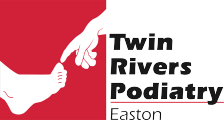Shockwave Therapy

Dr Kaplan is happy to announce a new procedure available in office for patients who are suffering from heel pain. The Dornier EPOS Ultra – Chronic Plantar Fasciitis, orthopedic shock wave therapy with a 92 % success rate. The one year follow up to the FDA study, patients reported Excellent/Good 94%, Fair 6%, Poor 0%.
Extracorporeal Shock Wave Therapy (ESWT)
What is extracorporeal shock wave therapy?
Shock wave therapy is a noninvasive method that uses pressure waves to treat various musculoskeletal conditions. High-energy acoustic waves (shock waves) deliver a mechanical force to the body’s tissues.
ESWT stands for Extra-corporeal Shock Wave Therapy, which is a big fancy name and high technology when, in fact, it is a very simple, quick, non-surgical procedure.
Dr Kaplan is happy to announce a new procedure available in office for patients who are suffering from heel pain. The Dornier EPOS Ultra – Chronic Plantar Fasciitis, orthopedic shock wave therapy with a 92 % success rate. The one year follow up to the FDA study, patients reported Excellent/Good 94%, Fair 6%, Poor 0%.
How effective is ESWT?
The results were an amazing average reduction in pain of 92% with only one treatment. (This data reflects the results of all patients treated in the study one year after receiving one treatment with the Dornier EPOS ESWT machine).
What signs indicate this therapy is needed?
Shock wave therapy may treat conditions such as degenerated tendons (Achilles tendonitis), heel pain (plantar fasciitis) and tennis elbow (lateral epicondylitis).
When should I Consider ESWT?
If you have had your condition for more than six months and have tried three conservative therapies with no results, do not wait any longer to seek help. It is natural to procrastinate, but not a good idea for tendonitis conditions, since continuously using degenerative tendon tissue can cause further damage.
When should I avoid this therapy?
Complications are infrequent with shock wave therapy. People who have poor sensation (neuropathy) or hypersensitivity in the target area should not have this procedure. Open sores should also be avoided. Shock wave therapy is not used in patients with heart conditions or seizures. It should not be used during pregnancy. This should be discussed with your physician before undergoing the procedure.
How does it cure my condition?
The Dornier Epos ESWT machine has inline ultrasound allowing the physician to view the damaged tissue and spur site. The painful unhealthy tissue is first targeted with ultrasound and then the machine produces and directs powerful shockwaves to the damaged tissue. This causes micro-trauma to the tissue and activates your body’s own healing process. The newly traumatized tissue is replaced with strengthened new fibers called Fibroblasts. This new tissue is stronger and more flexible than your previously damaged tissue.
What is involved in the procedure and does it hurt?
Perhaps the most exciting thing about this procedure is that it is not a painful, invasive procedure. There is no lengthy recovery period, no costly time off from work, and no risk of causing further damage or injury.
General Details of Procedure
A noninvasive probe is applied to the skin. An electrical charge creates an energy wave that is focused on the area of concern. The shock waves create a force on the tissues that may induce healing. It’s not clear why this approach to healing works for some people, but it may be that shock waves cause inflammation and improve blood flow to encourage the body to repair and heal itself.
What kind of recovery can I expect?
The FDA ESWT studies using our treatment protocol show an overwhelming success rate. In the study, a group of 150 patients was asked to rate their pain level on a scale of 1-10. The AVERAGE pain level before treatment was 7.7. After receiving one ESWT treatment, the patients were asked one year later to rate their pain level again on a scale of 1-10. The average pain score post ESWT was 0.6. This is a 92% reduction in pain and a much higher rate of success than any non-surgical or surgical procedure. What’s more, ESWT cannot cause further damage, as we all know surgery can.
ESWT is forcing your body to create new tissue cells in the damaged area so you need to expect a gradual healing to take place over many weeks. In fact much of the healing takes place between week 6 and week 12. Many patients feel pain relief immediately. The ESWT shock waves produce an “analgesic affect” which can cause a break in the pain cycle, often resulting in an immediate pain cessation. Every patient is individual. In some, the majority of the pain relief is immediate. In others it gradually gets better from day one through the first six weeks. With ESWT the pain and the casual condition will begin getting better immediately after the treatment. You do not need to plan recovery time off from work or your life!
What happens after the procedure?
Patients typically bear weight after treatment. Patients are advised to reduce the level of physical activity for one to two weeks after treatment. Shock wave therapy may give good outcomes for some tendon problems or chronic degenerative conditions. Examples include Achilles tendinitis and plantar fasciitis.
Potential Complications
The main complications are pain and hypersensitivity at the site of treatment. These problems typically resolve with time. Pain and disability may persist when shock wave therapy is not successful.
Frequently Asked Questions
Is this a substitute for surgery?
Shock wave therapy is a noninvasive treatment that can help avoid surgery. Treatment responses may vary. Success cannot be guaranteed.
Is this covered by insurance?
This may depend on the insurance policy. Discuss this with your health care provider and contact your insurance carrier before having the procedure.
Source: American Orthopaedic Foot & Ankle Society
